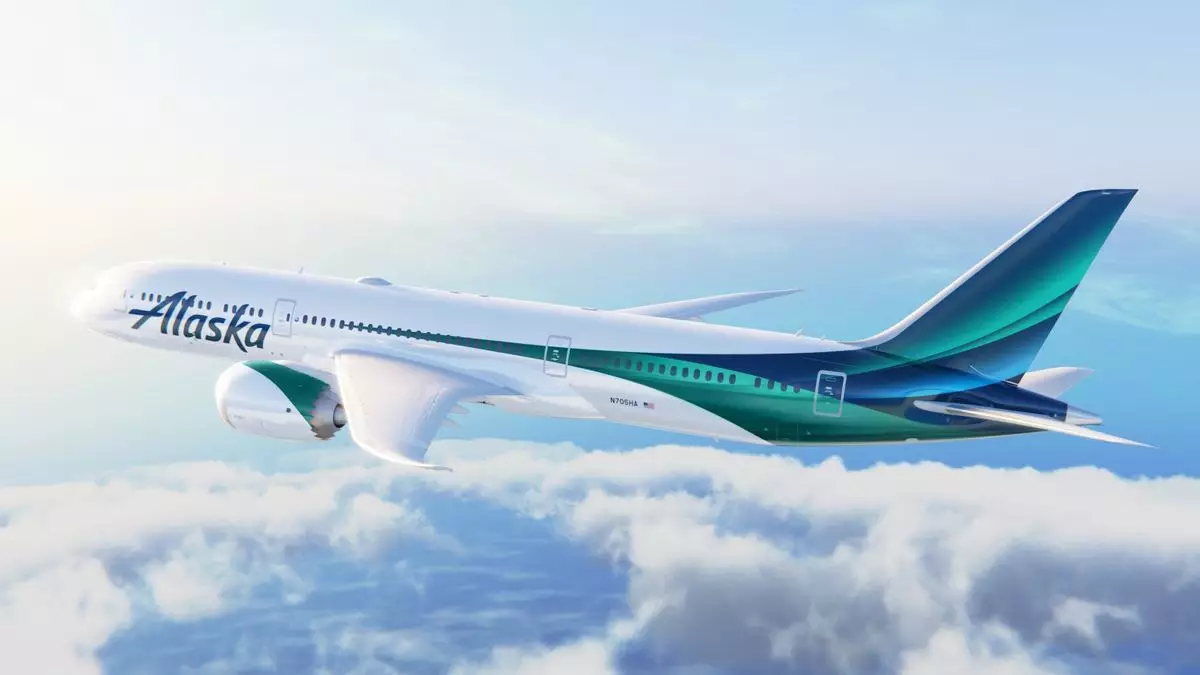Alaska Airlines is boldly stepping into the international arena, signaling a significant shift in its strategic trajectory. The airline’s announcement of new long-haul routes to London Heathrow and Iceland marks not only an expansion of its route network but a redefinition of its brand identity on the global stage. By leveraging its freshly acquired Boeing 787 Dreamliners, stylized with a mesmerizing aurora-inspired livery, Alaska endeavors to blend aesthetic flair with operational efficiency. This move positions the airline as a formidable contender in the transatlantic market, challenging traditional players with its unique approach to service and experience.
The choice of aircraft underscores Alaska’s commitment to passenger comfort and innovation. The Boeing 787 Dreamliner, celebrated for its fuel efficiency and passenger-friendly design, is equipped with 34 private suites and lie-flat seats in business class. Such features hint at a passenger experience that emphasizes tranquility and luxury, which could give Alaska a competitive edge. However, the airline’s capacity to deliver on these promises hinges on meticulous execution and consistency, areas where newcomer airlines sometimes falter.
Strategic Expansion or a Risky Leap?
While the imminent launch of Seattle-London service and seasonal Reykjavik flights is exciting, it also raises questions about Alaska’s readiness to operate successfully on these routes. The airline’s recent acquisition of long-haul capable widebody aircraft, including Boeing 787s and Airbus A330s, reflects a serious capital investment and strategic shift. Yet, entering the competitive European market—dominated by giants like British Airways, Virgin Atlantic, and Delta—demands more than just piloting sleek aircraft; it requires impeccable service, marketing savvy, and adaptability.
The decision to put Boeing 737 Max aircraft on the Seattle-Iceland route indicates a nuanced approach, balancing long-haul comfort with short-haul efficiency. This strategic segmentation could serve as a proving ground for Alaska, testing passenger response and operational readiness before scaling further. However, the airline’s success will ultimately depend on how well it manages to differentiate itself amidst well-entrenched competitors who have years—if not decades—of land and customer loyalty.
Challenging the Status Quo with Ambitious Goals
Alaska Airlines’ foray into Europe and beyond is not just an expansion but a statement of intent. The airline’s decision to build Seattle into an international hub demonstrates strategic foresight, capitalizing on a less congested port to establish a foothold for future routes. The introduction of flights to Rome next spring further emphasizes this growth trajectory.
Yet, skepticism remains. The airline’s new long-haul ambitions are ambitious, and success hinges on a delicate balance of operational excellence and marketing prowess. Moreover, the post-pandemic airline industry is marked by intense competition, fluctuating demand, and unpredictable geopolitical factors that could threaten these plans. Alaska Airlines’ move to challenge established transatlantic carriers makes it a compelling underdog story, but only time will tell if it can truly disrupt the status quo and sustain its vision for global expansion.


Leave a Reply